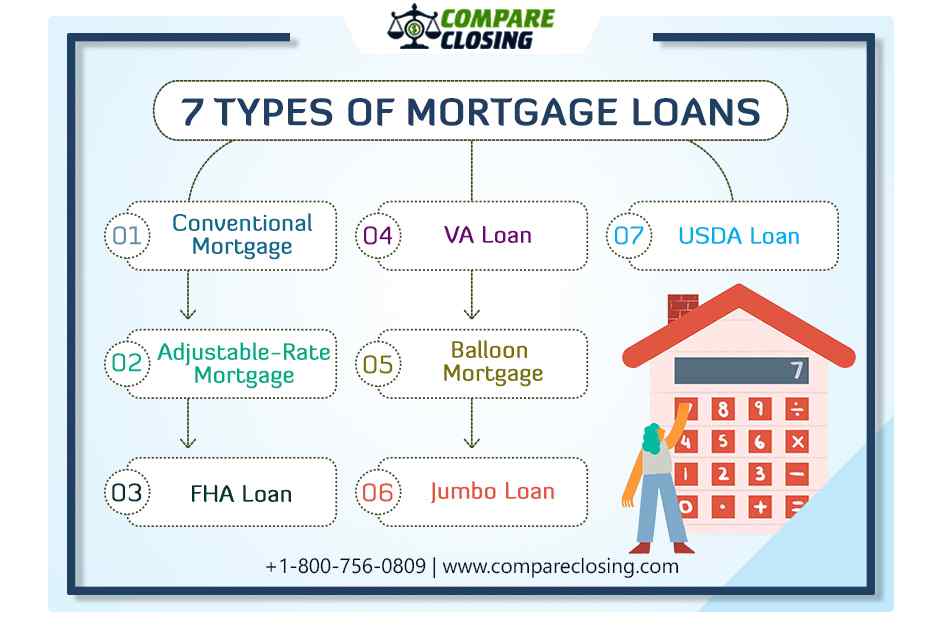Conventional Mortgage Loans: Just How They Compare to Other Car Loan Options
The Vital Factors to Take Into Consideration When Choosing In Between Fixed-Rate and Adjustable-Rate Mortgage Lendings
When assessing mortgage choices, borrowers deal with a critical choice between fixed-rate and adjustable-rate financings, each providing unique advantages and possible mistakes. Secret considerations such as interest price stability, predictability in regular monthly repayments, and the effects of prospective price changes can considerably influence long-term economic health and wellness.
Interest Price Stability
When picking a mortgage, understanding rate of interest price security is essential for notified decision-making. Passion prices can significantly affect the general price of a home mortgage, and recognizing the nature of these rates is important for debtors.
On the various other hand, variable-rate mortgages (ARMs) start with reduced first prices that might change periodically based on market conditions. While this can cause reduced settlements originally, it additionally presents unpredictability, as consumers might encounter raised settlements if rates of interest climb. For those taking into consideration an ARM, it is essential to analyze the chance of price adjustments, the possibility for repayment boosts, and the length of the initial fixed-rate period.
Ultimately, the selection in between adjustable-rate and fixed-rate home loans depends upon individual risk resistance and economic scenarios. Comprehending rates of interest security assists customers make informed choices that straighten with their lasting monetary objectives.
Regular Monthly Payment Predictability
While debtors typically focus on passion rate security, the predictability of regular monthly settlements is similarly essential in the mortgage option process (Conventional mortgage loans). Month-to-month repayment predictability plays an important role in budgeting and economic planning, as it directly impacts a property owner's capital and overall economic health
Fixed-rate home mortgages provide a consistent regular monthly payment throughout the life of the financing, enabling borrowers to expect and plan their costs efficiently. This stability can be specifically beneficial for new homebuyers or those on a set income, as it gets rid of the unpredictability related to rising and fall payments.
Alternatively, adjustable-rate mortgages (ARMs) commonly feature lower first payments that can alter over time, resulting in possible irregularity in monthly responsibilities. While originally appealing, this unpredictability can complicate economic preparation, especially if customers do not make up future price adjustments.
Prospective Rate Adjustments
In the world of variable-rate mortgages (ARMs), prospective rate modifications stand for a considerable aspect that customers need to carefully think about. Unlike fixed-rate mortgages, where the rates of interest remains unchanged for the life of the funding, ARMs are identified by rising and fall passion prices that are tied to market indices. This irregularity can lead to substantial changes in monthly payments, impacting the borrower's economic preparation and budgeting.
Commonly, ARMs have a first fixed-rate period throughout which the rates of interest is steady. Hereafter period, however, the rate readjusts at fixed periods-- frequently every year. Customers should recognize the margin and index used to compute these changes, as they directly influence future passion prices. Furthermore, ARMs typically include caps that restrict just how much the rate of interest can boost at each look at this web-site adjustment and over the life of the lending, which can give some degree of security versus extreme rate walks.
Comprehending these potential changes is crucial for consumers, as they directly impact long-term repayment commitments. As a result, assessing personal economic situations and run the risk of resistance is vital when determining whether an ARM aligns with one's monetary objectives.
Financing Term Considerations
Loan term factors to consider play a crucial duty in the decision-making procedure for consumers selecting between fixed-rate and adjustable-rate mortgages. The size of the funding term substantially affects monthly settlements, interest prices, and general economic planning.

Eventually, customers must analyze their personal situations, economic objectives, and market conditions when considering the implications of financing term selections within each home loan type.

General Cost of Loaning
Fixed-rate home loans supply predictable regular monthly repayments, as the passion rate stays continuous throughout the loan term. This predictability can lead to lower general prices, specifically in a stable or declining rate of interest price setting.
Conversely, adjustable-rate mortgages (ARMs) generally begin with lower first prices, resulting in minimized upfront go to the website costs. However, these rates can boost after an initial period, resulting in potentially higher long-term costs. Customers should think about the frequency and extent of rate adjustments, along with the total lending period, to properly analyze the economic ramifications.
Furthermore, the general cost of borrowing encompasses not only passion prices however also costs and various other connected costs, such as shutting expenses and insurance (Conventional mortgage loans). When examining mortgage alternatives, customers should perform an extensive cost evaluation over the life of the funding. By doing so, they can make an informed choice that aligns with their economic goals and take the chance of tolerance
Verdict
Passion rate security and month-to-month payment predictability are paramount for effective budgeting, while the capacity for price modifications in ARMs presents financial uncertainty. Furthermore, the expected period of homeownership and the total cost of borrowing, consisting of interest rates and associated charges, have to align with specific economic scenarios and run the risk of resistance.
Key factors to consider such as passion rate security, get redirected here predictability in regular monthly repayments, and the ramifications of possible price adjustments can significantly affect long-lasting monetary health and wellness. Rate of interest prices can dramatically influence the total price of a home mortgage, and identifying the nature of these prices is crucial for borrowers. Unlike fixed-rate mortgages, where the passion price continues to be the same for the life of the finance, ARMs are identified by fluctuating interest rates that are connected to market indices. Additionally, ARMs frequently include caps that restrict just how a lot the interest rate can increase at each adjustment and over the life of the finance, which can give some degree of protection versus drastic rate hikes.
Interest rate security and monthly settlement predictability are paramount for efficient budgeting, while the capacity for rate adjustments in ARMs presents monetary unpredictability.